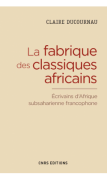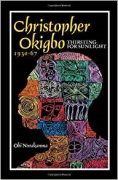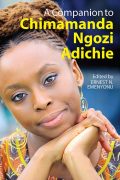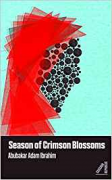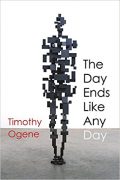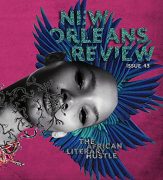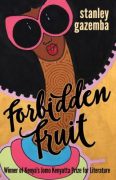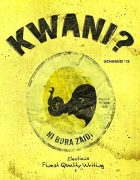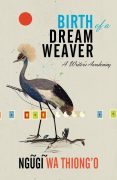La fabrique des classiques africains. Écrivains d’Afrique subsaharienne francophone | Une critique d’Ewout Decoorne
En 2007, Le Monde des livres publiait un manifeste intitulé « Pour une littérature-monde en français ». Une quarantaine d’auteurs célèbres y réclamait de mettre fin à l’idée de la francophonie comme espace littéraire français hors de la France. Les écrivains voulaient « réagir contre la définition d’une littérature francophone dont le centre, la littérature française, est exclu. »º1, ceci en mettant en question l’opposition inégale entre un centre et une périphérie dans les lettres francophones. L’abandon du terme francophonie en faveur de la phrase « littérature-monde en français » pourrait ainsi mettre en valeur toutes les productions littéraires écrites en français, n’importe leur provenance géographique.
Cependant, le manifeste confirme ce qu’il vise à dénoncer : la domination de l’infrastructure culturelle de la métropole. La majorité des signataires présente un œuvre couronné de succès, grâce à la parution chez les grandes maisons d’édition parisiennes comme Gallimard. Le lieu du combat, le journal Le Monde, fait également preuve de la dépendance aux voies de promotion partant depuis Paris. Ceci exemplifie les maintes asymétries qui structurent la circulation intellectuelle et littéraire entre l’hexagone et le reste du monde francophone. Malgré une unité linguistique, les textes littéraires font face à des opportunités de distribution inégales. Tandis que le Canada, la Belgique et la Suisse se débrouillent sur le plan littéraire grâce à une infrastructure éditoriale avancée, l’Afrique subsaharienne francophone semble mal pourvue de support institutionnel.
Dans La fabrique des classiques africains, Claire Ducournau reconstruit d’une façon aussi innovatrice que provocante les étapes menant à la consécration des œuvres littéraires africaines. En faisant ceci, Ducournau stimule le lectorat à découvrir les processus sociologiques et les mécanismes économiques qui déterminent les apparences de la littérature francophone dès les indépendances. Ceux qui croient toujours que ce sont avant tout les auteurs qui conçoivent la littérature font preuve d’une confiance naïve qui remonte aux idéaux romantiques du créateur artistique souverain. Cette étude, le résultat d’une thèse de doctorat, combine des méthodes multidisciplinaires afin d’illuminer la trajectoire de la genèse du classique africain. Avec une enquête à la fois statistique, ethnographique et documentaire, Ducournau réussit à démontrer les multiples aspects extra-littéraires du processus éditorial.
Dans son prologue, l’auteur reconstruit les origines contextuelles du manifeste. Selon elle, la rencontre des auteurs francophones à Bamako lors du festival Étonnants voyageurs a marqué le début des réflexions proposées. Ducournau y distingue deux groupes d’auteurs, dont l’un cherche à atteindre un public international en renforçant le lien avec la France et le français, tandis que l’autre s’aligne avec un public local en mettant en avant une esthétique soi-disant africaine. La recherche des liens entre des données biographiques et les convictions étalées par les partisans et les détracteurs du manifeste élargisse notre compréhension de la crise d’identité des littératures francophones non-françaises, spécifiquement celles de l’Afrique subsaharienne. La controverse éclatée en 2007 permet ainsi à découvrir les différents facteurs sociologiques, économiques et culturels qui accordent ou ignorent la reconnaissance du génie artistique africain. En même temps, elle nous incite à poser des questions difficiles, telles que celle énoncée par Kossi Efoui qui se demande s’il faut vivre en Afrique pour pouvoir écrire sur l’Afrique °2. Aussi la langue dont l’écrivain se sert, le public auquel il se dirige et le sens qu’il attache à l’Afrique comme signifiant font l’objet de controverses perpétuelles.
Les deux parties de l’étude analysent les conditions sociales et historiques qui expliquent les racines du manifeste, et qui ont d’ailleurs pour plus de cinquante ans établi l’espace littéraire africain. En même temps, l’auteur cherche à comprendre pourquoi le lectorat français fait l’éloge de certains auteurs africains peu connus dans leur pays d’origine, tandis que d’autres auteurs sont abondamment étudiés en Afrique, mais restent obscurs hors du continent. Les réponses semblent complexes et confuses. Tout d’abord, l’histoire de la reconnaissance des littératures africaines francophones et la légitimation de ses écrivains, font preuve d’une lutte continue, marquée par des périodes de crise et de réussite. Ducournau distingue « deux vagues transnationales de reconnaissance »°3. La première a été déclenchée en 1983 par la cooptation à l’Académie française de Léopold Sédar Senghor, épigone de la Négritude. Ceci a abouti à une multiplication des structures éditoriales spécialisées en littératures africaines. Dans les années 1990, quand le climat culturel augmente son intérêt pour l’Afrique dans toute sa richesse artistique, comme le témoignent sa musique et son art visuel, les littératures eux-aussi gagnent en prestige. Ceci résulte dans l’apparition de plusieurs nouveaux éditeurs.
Cette historiographie de l’industrie éditoriale transnationale s’appuie sur des données quantitatives et qualitatives. Ducournau rassemble des chiffres sur les prix littéraires, le nombre de traductions, etc. pour quantifier le taux de succès qu’un écrivain peut achever. Des entretiens, des consultations d’articles de presse etc. permettent d’obtenir des informations sur la nature du succès littéraire. En passant, Ducournau fournit des recherches sociologiques impressionnantes du Grand prix littéraire d’Afrique noire, de l’Association des écrivains de langue française et de la présence – assez faible – des voix africaines dans les revues Le Magazine littéraire et La Quinzaine littéraire. Des recherches sur l’état de la littérature en Afrique-même font généralement preuve de conditions défavorables en ce qui concerne la production et la consommation littéraire : la littérature reste un passe-temps élitaire, vue les taux d’alphabétisation et le coût de vie. La grande majorité des publications dans le continent consiste conséquemment de livres scolaires.
La deuxième partie du livre présente une analyse des caractéristiques sociologiques et géographiques des écrivains socialisés dans les pays francophones d’Afrique subsaharienne. Ducournau dessine un portrait de groupe de deux populations de référence, dont l’une contient 404 écrivains, et l’autre les 151 personnes les plus renommées parmi eux. Les deux populations, représentées dans plusieurs tableaux, sont ensuite soumises à différentes paramètres diachroniques, géographiques, sociales, générationnelles etc. Ainsi, Ducournau sait développer un outil de recherche ingénieux pour examiner des évolutions à travers le temps, à travers des espaces littéraires, ou même à l’intérieur des œuvres individuelles. L’application d’un tel schéma est exemplifié d’une façon convaincante par une comparaison entre les représentations du colonialisme par Amadou Hampâté Bâ et Ahmadou Kourouma °4. De façon collective, les modèles démontrent avant tout une féminisation et une professionnalisation au cours du temps.
En générale, Ducournau réussit à faire comprendre les mécanismes complexes sous-jacentes à l’industrie des lettres francophones. La méthodologie de l’étude est riche et ambitieuse, lorsqu’elle sait combiner plusieurs stratégies divergentes pour arriver à une image peu poétique mais bien clarifiant de la littérature comme une industrie sévère et compétitive. La profondeur et la lourdeur de l’étude limitent son accessibilité pour le grand public, mais celui qui s’intéresse aux processus sociologiques littéraires sur le plan transnationale sera bien satisfait. En même temps, cette étude peut servir comme point de départ pour d’autres explorations extra-littéraires. Des questions plus approfondies sur les développements actuels en ligne, sur le rôle du genre, ou sur les différentes évolutions dans l’Afrique anglophone ou maghrébine peuvent prolonger la route que Ducournau nous a pavée ici.
Ewout Decoorne
°1 C. Ducournau, La fabrique des classiques africains, Paris: CNRS Editions, 2017, pp. 39
°2 Ibid., p. 75
°3 Ibid., p. 83
°4 Ibid., p. 340-1
This book review was published in: Africa Book Link, Summer 2018

